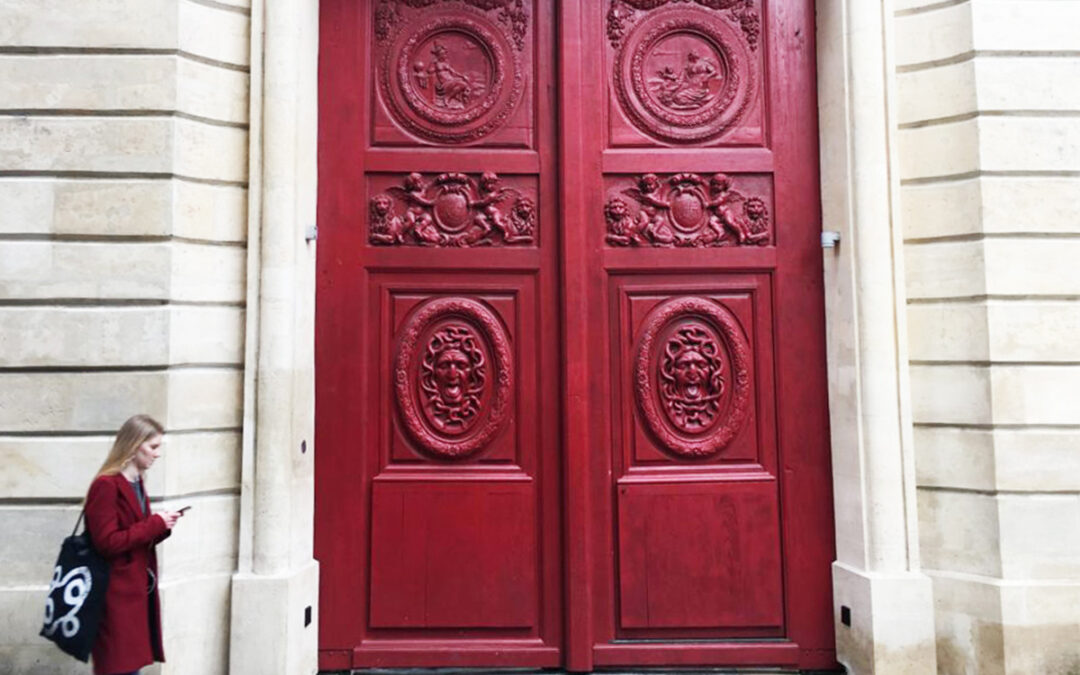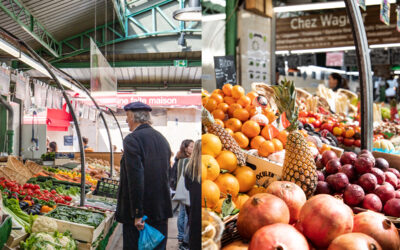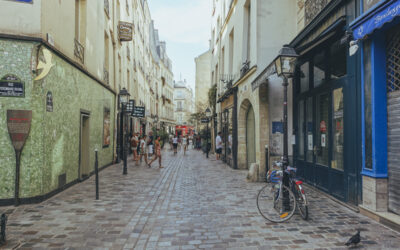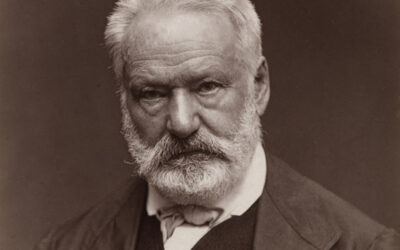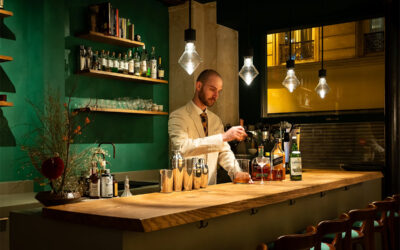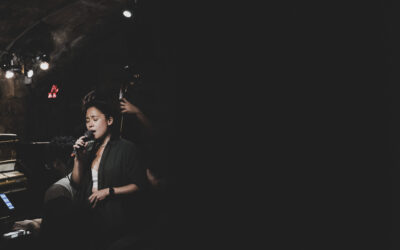You know it, it is one of the most majestic gates in the Marais.
It is decorated with a Gorgon, this jellyfish with the head of a woman with hair intertwined with snakes, which is said to have the power to petrify any mortal who looks at it.
Suffice it to say that the Hôtel Amelot de Bisseuil, more commonly known as the Hôtel des Ambassadeurs de Hollande and the flagship of the Marais, has high protection against the evil eye and… indiscretions.
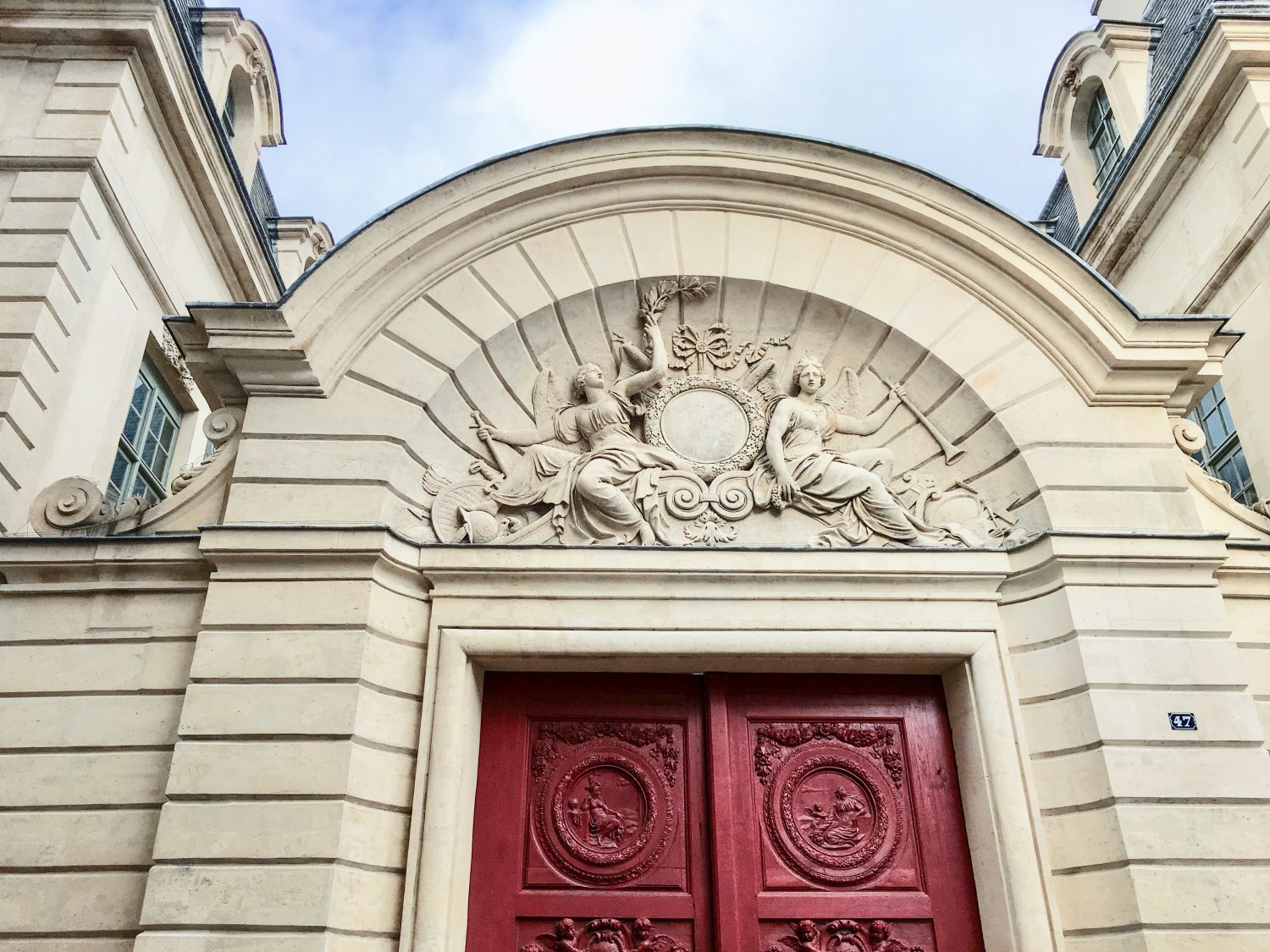
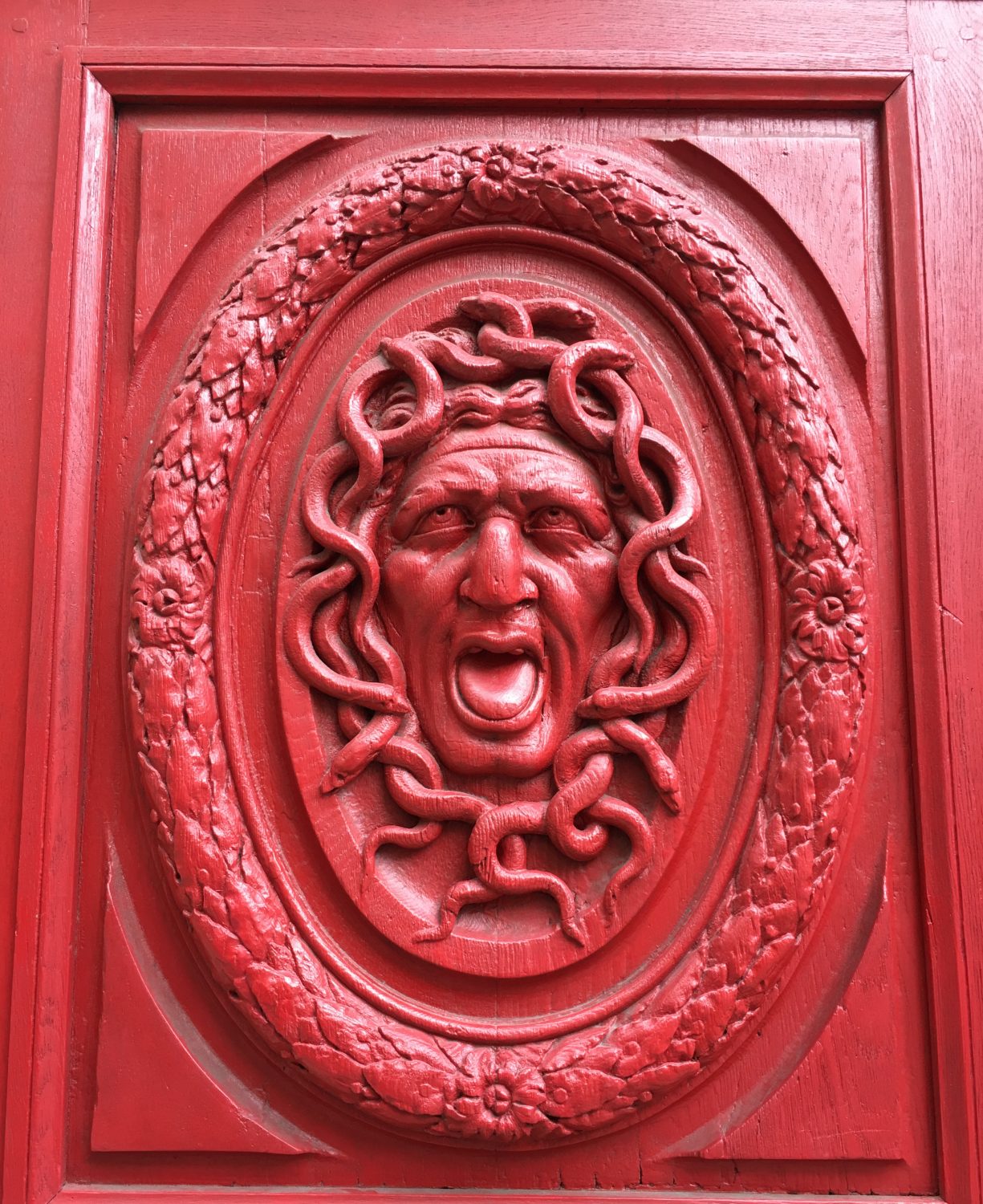
Gorgon from the door of the Amelot hotel in Bisseuil (or Dutch ambassadors' hotel), sculpted by Thomas Régnaudin. Photo ©Katia Barillot
Built between 1657 and 1660 from a Middle Ages building then listed as a Historic Monument in 1924, this hotel as we know it today stands out for its very unusual architectural bias.
Thus, he does not have garden pbecause it is located on a narrow plot of land overlooking not a courtyard and a garden, as would be appropriate in the classic organization of a private mansion, but between two courtyards.onnant for one at 47 rue Vieille du Temple and for the other at 10 rue des Guillemites – formerly named rue des Singes -.
However, the interior organization of this private hotel makes it a real gem.
While the stables and carriage houses are located on the ground floor, upstairs there are state apartments, service apartments, study rooms, anterooms and bedrooms.
Pieces each more dazzling than the last.
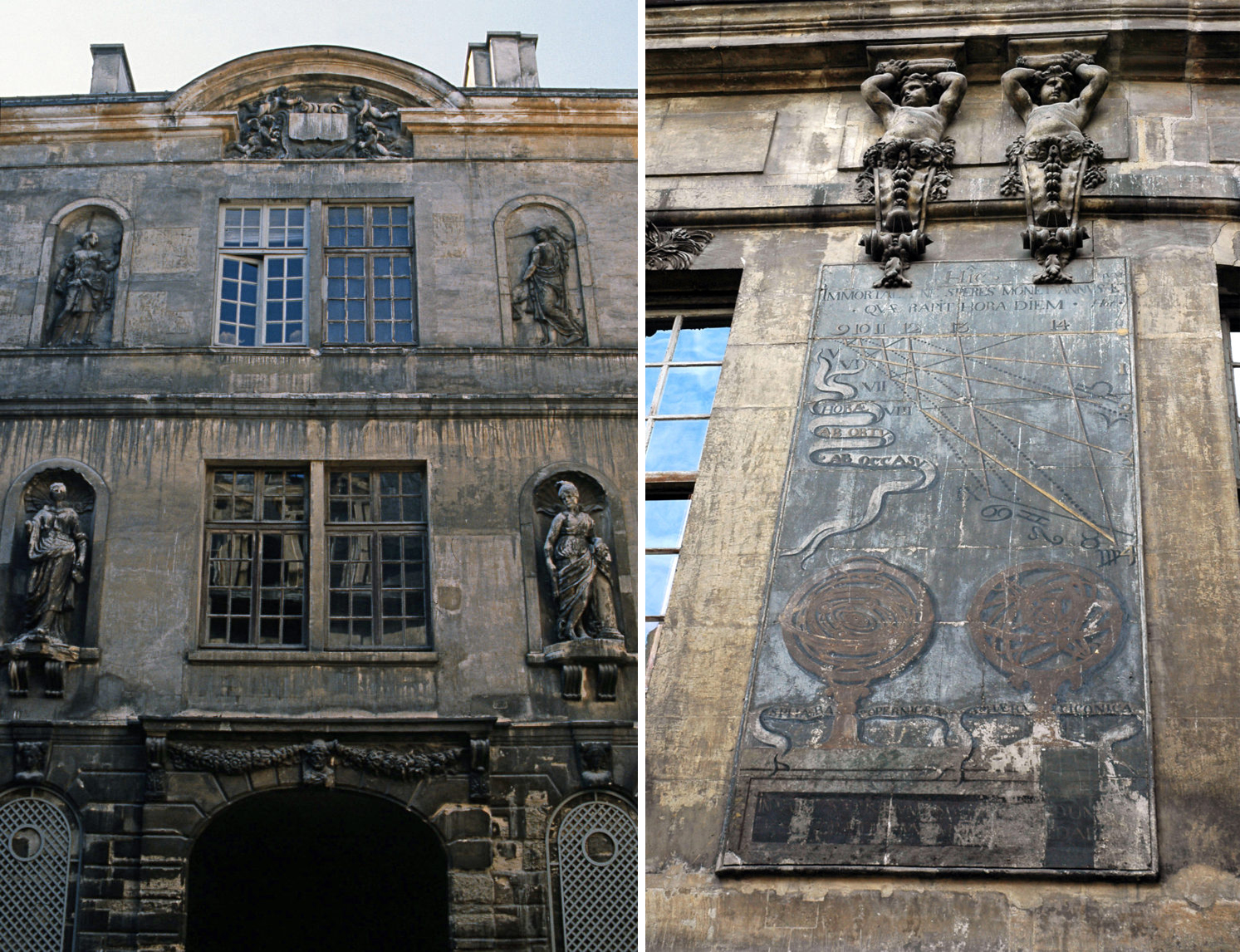
Hotel Amelot de Bisseuil known as the Ambassadors of Holland, interior facade, before restoration. Photo ©Marianne Ström
Extraordinary interior decorations were created in the mid-XNUMXth century by prestigious artists tsuch as Michel Corneille and Jean Cotelle for the Galerie Psyché, Louis Boulogne for the Italian room.
In the XNUMXth century it was Joseph-Marie Vien and Guibert who worked on the Salon de Flore and the Salon des Zephyrs, which survived despite the revolution.
The sumptuous building had illustrious owners and tenants until the XNUMXth century, such as Marshal Jean de Rieux, a Breton gentleman and comrade-in-arms of du Guesclin.
In 1638 it was sold by Henriette de Coulanges, aunt of Madame de Sévigné, to the Amelot de Bisseuil family, financial intendant and master of requests, who had it rebuilt in a majestic manner by the architect Pierre Cottard.
Moreover, one of the names of this hotel comes from the name of this powerful Parisian dress family.
The designation Hôtel des Ambassadeurs de Hollande appeared in the XNUMXth century and its origin remains mysterious and enigmatic.
No reliable source can suggest that a Dutch diplomat lived there, apart from the allusion to a probable party given by the Dutch ambassador in 1757 in this hotel transcribed by the writer Restif de la Bretonne in his work Mr Nicolas et by the long stay of the chaplain of the Dutch embassy who would have celebrated worship there.
The Amelot hotel in Bisseuil also witnessed an important episode in the history of France: in 1407, a few meters from the building, the assassination of Duke Louis of Orléans, brother of King Charles VI, took place, by his first cousin the Duke of Burgundy, Jean sans Peur.
In 1759, Louis Le Tellier acquired the hotel and carried out improvements with the participation of the sculptor Honoré Guibert.
What followed was a new waltz of owners and tenants, the most famous of whom was Pierre-Augustin Caron de Beaumarchais who founded a trading house there in 1776 which was in fact a shell company whose goal being to come to the aid of the American colonists insurgent against England without compromising France.
It is also in this hotel that Beaumarchais finished writing The Marriage of Figaro.
During the Revolution the hotel was abandoned and was very damaged in the XNUMXth century.e and XIXe century by traders and craftsmen who divided it into apartments, stores and workshops.
It was only in 1924 that its new owner, Colonel Paul Brenot, undertook its restoration with the architect Danis.
In the 50s, the hotel was purchased and magnificently restored by a great patron of the XNUMXth century.e century: the founder of the Air France group, Paul-Louis Weiller.
During this period, great personalities entered this splendid place.
Since 2010 this hotel has belonged to Acanthe Développement, a real estate company focused on privileged districts of Paris, which has launched heavy renovation work supervised by the historian Pascal Payen-Appenzeller, specialist in town planning and the History of Paris and by the architect Jean-François Lagneau.
For a few months, the hotel housed a Chanel pop-up boutique on the ground floor.
Now theRumor has it that a Michelin-starred restaurant could replace the fashion house.
Text: ©Ella David
The photos below were lent to us by our colleagues from the Vivre le Marais website.
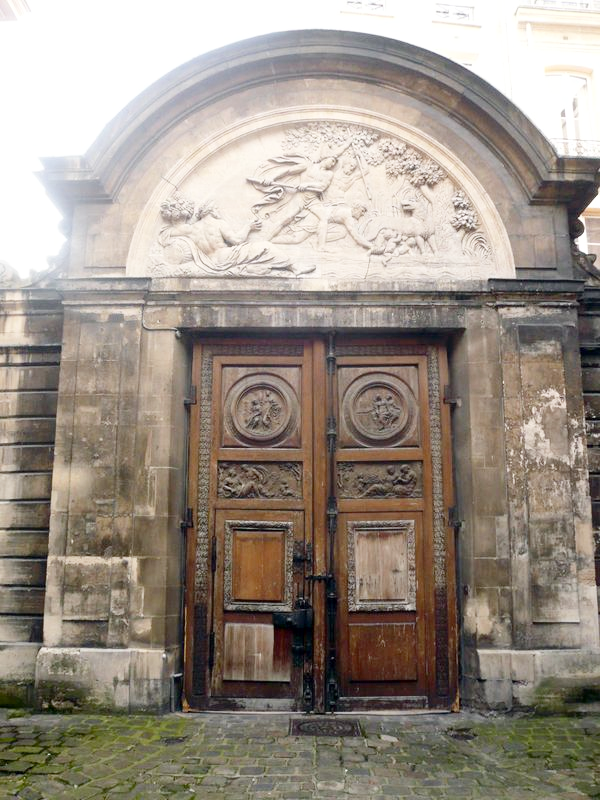
Interior view of the portal, surmounted by a semicircular arch which represents Romulus and Remus being suckled by the she-wolf. Sculpted decoration by Thomas Regnaudin (1622-1706). On the street side, we find a similar decor which represents two “fames” with their trumpets, before restoration.
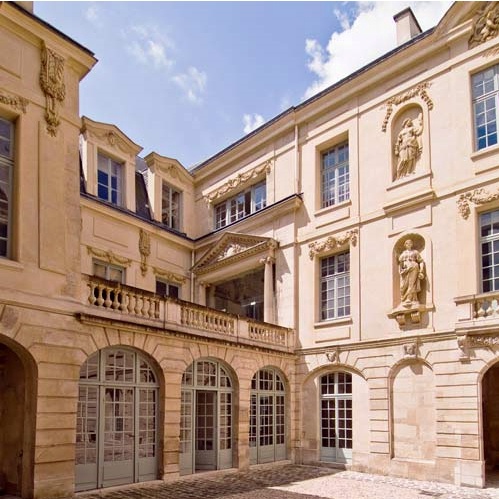
View of the second interior courtyard, richly decorated with statues in their niches, which represent Dawn, Dusk, and the virtues: Strength, Truth, Prudence, Justice, Vigilance and Wisdom. Terrace on the left and access portal to the west wing, with Ionic columns and pediment.
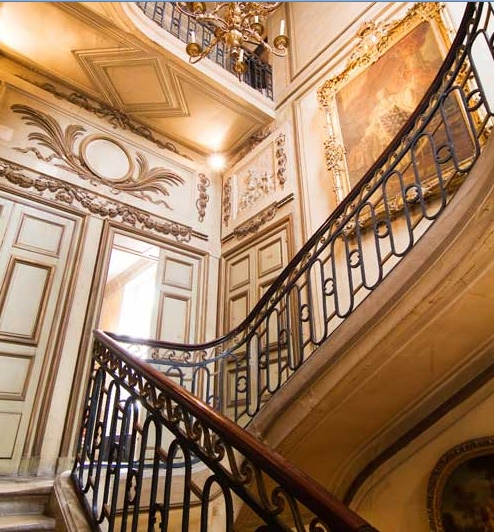
The staircase and its wrought iron banister, which we owe to Le Tellier.
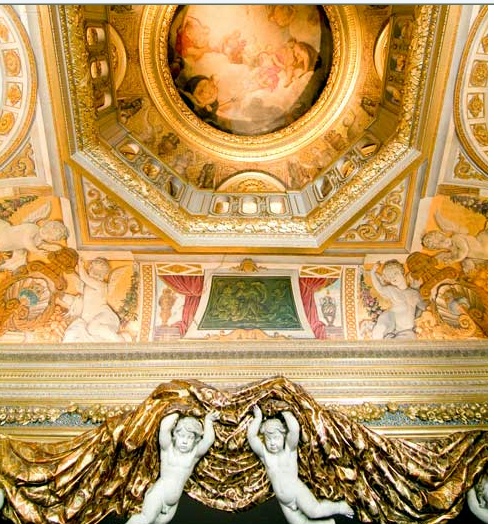
Ceiling of the “Italian bedroom”.
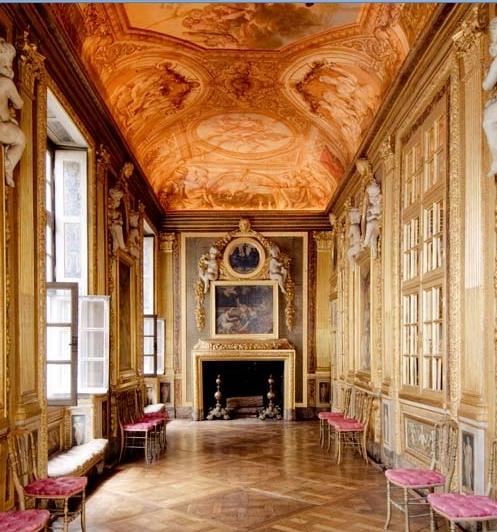
The gallery of Psyche (Michel 1st Corneille, ca 1660), one of the jewels of the monument.
FOR PASSIONATES OFUS
The Enfants Rouges market, everyone loves it
Restaurants, merchants, a photo store, a bookstore... This is how the Red Children's Market presents itself, unique in its kind in the Marais and its capital because it is the only one to offer such a varied and varied range of restaurants. qualitative.
The Marais Jewish quarter in Paris
From the 13th century, the Marais was home to a Jewish community which remained there until its expulsion in the 14th century. Fleeing poverty and persecution, Jews from Eastern countries and those from Alsace settled there in the 19th century. Around rue des rosiers and Place Saint-Paul renamed Pletz…
Victor Hugo, the writer with a thousand talents
Born in 1802, Victor Hugo became a social writer, a playwright, a poet, a novelist and a romantic designer. Nicknamed the man-ocean then the man-century, he is a political figure and a committed intellectual. He found success with Notre-Dame-de-Paris in 1831 and with Les Misérables in 1862.
NOW ON THE MOOD MARSH
Divine brunch at the foot of Notre-Dame
Of course, officially, it is not the Marais. But at Son de la Terre, a barge recently moored at the Montebello quay (5th), the 4th arrondissement is in sight. Moreover, this one is incredible: on one side, it is Notre-Dame flooded with sunlight; on the other, the quays, the book sellers, the walkers, the joggers.
Saka, a cocktail bar like in Tokyo
Here is an address which gives the measure of the transformation of the Marais. And it's enough to silence the grumpy people whose mantra is: “It was better before…” No, everything was not better “before” in the Marais. Besides, there was no American bar like Saka, which cultivates a form of excellence that can only be found in Japan.
Jazz at 38Riv: The highlights of May
The only jazz club in the Marais, 38Riv is the temple of cool and swing. Rue de Rivoli, between Saint-Paul and Hôtel de Ville, its vaulted cellars are the home base of the new jazz scene. Every evening, the magic happens.

